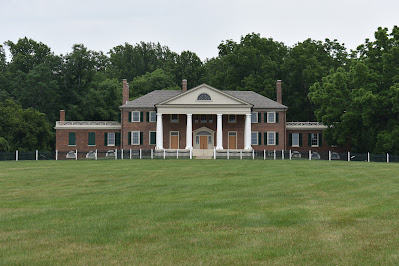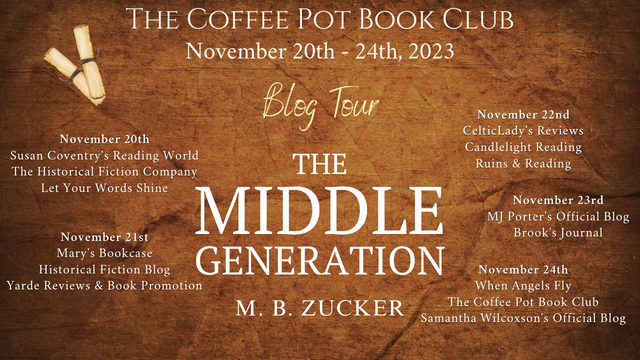I'm pleased to welcome author Avellina Balestri to the blog today! She shares that there is much more to the character of Robin Hood than most of us realize. Join us to dig deeper into this familiar legend!
~ Samantha
~~~~~~~~~~~~~~~~~~~~~~~~~
Many One Sings of the Grass:
The Historical, Legendary, and Religious Roots of Robin Hood
Guest Post by Avellina Balestri
“There’s many one sings of the grass, the grass, and many one sings of the corn, but those that
sing of good Robin Hood know little where he was born.” – Traditional ballad
When writing my novel Saplings of Sherwood, the first book in a planned Robin Hood
retelling series, The Telling of the Beads, I did so with the keen awareness that I was simply
adding another thread to an already impressive tapestry. The legend of Robin Hood seems
destined to never outgrow its own relevance, even as it resists being pinpointed with any
historical certainty. It has been adapted to the needs of every era and medium of storytelling, and
its popularity shows no signs of waning.
The tales draw inspiration from the exploits of medieval English outlaws who came to be
regarded as folk heroes for defying oppressive hunting restrictions and lightening the purses of
travelers from privileged classes. They dwelt in the vast forests of Sherwood and Barnesdale and
sometimes forged mutually beneficial alliances with those on the margins of society. Other
historical sources include the feats of Saxon and Welsh rebels who took a stand in the aftermath
of the Norman Conquest, and supporters of Simon de Montfort, who challenged the authority of
the crown in order to establish a regular parliament. Their daring resulted in them being
banished, and branded with the epithet “wolf’s heads.”
Beyond history, the enigmatic Green Man of myth prefigures Robin Hood in his style of
executing primal justice and challenging passers-by to test their mettle. We find here the
archetype of the trickster and mischief-maker who, like the wily Reynard the Fox of medieval
fables, leads us on a wild goose chase, only to turn on his heel and pursue us instead. He is the
essence of all things that grow and wither in their allotted time, proclaiming that “no man dies
before his day,” and when he appears with the antlers of a stag and blows his hunting horn, the
souls of the deceased are gathered together and swept into the Wild Hunt, which takes them
across the veil to the Otherworld.
This unique combination of cultural facets, through which each passing generation has shone
new light, serves as a testament to the endurance of the human spirit. It is a song that never
sleeps, for it strikes a universal chord within our consciousness that makes us merry even amidst
travail. In this way, there is truth to the saying that Robin Hood dwells in all the forests of the
world. He is an everyman who straddles classes and embodies natural law, enforcing an order
carved deeper than any man-made construct, something eternal, even divine. He is the thin line
between chaos and concord, the Lord of Misrule and the Prince of Thieves, who reflects the
image of our complex yearnings for wholeness in a corruptible universe.
In addition to the character’s universality, he also possesses a particularity of place. He is a
personification of the soul of England, shining bright with the memory of the ancient
Anglo-Saxons and their unique expression of liberty. He springs up from the fertile ground of
poaching culture, defending the rights of Englishmen to share in the bounty of the land. In his
kingdom of merry Sherwood, all serfs are made free and all displaced find a home. The
greenwood is the heart of England, and we are invited into it with all hospitality, but must expect
our status to be leveled. Robin Hood is a king for the common man, and rules by the consent of
those who love him.
Yet there are boundaries which he remains within, and therein lies his greatest power. He does
not give himself over to the seduction of the wilderness, but holds himself to a code that often
surpasses that of the establishment. He cannot cast out the conquering Normans, but must learn
to live with, and even learn from, them. Like the Magna Carta, he exists to curb tyranny, but he
would happily shed his blood as a loyal subject of his rightful King, acknowledging an authority
above his own. He is not simply a wish-fulfilling fantasy, for he mingles with our reality,
walking a tightrope between rebellion and restraint. In this, he is the incarnation of that quiet
revolution defining the history of his country, that gleam within the diamond set in the silver sea.
My first introduction to the legend came at age six when I fell in love with the charming and
clever fox from the Disney animated feature. While it was expected that parental figures might
meet an untimely end for the sake of a main character’s coming-of-age arc, Robin was a roguish
hero who I still feared might come to harm for putting his life on the line, time and time again,
on behalf of the most vulnerable in his society. This showed another side of love that went
beyond the instinctive sacrifice of a parent for their child and was offered freely to strangers.
“I only wish I could do more,” Robin tells the mother rabbit in one of my favorite scenes, as
he hands her a bag of coins. “And keep your chin up. Someday there’ll be happiness again in
Nottingham. You’ll see.”
“Oh, Robin Hood,” she murmurs, tears filling her eyes, “you risk so much to keep our hopes
alive. Bless you. Bless you.”
This, to me, is the heart of the film and the character – the reason why he became real to me
when I was young and feels no less real to me now. It is why I could not go romping in the fields
and woods surrounding my house without picking up sticks to brandish or bend into bows. It is
why I could not put pencil to paper without scribbling new adventures in Sherwood, in words
and drawings. It is why I became a lover of Britain, her colorful history and heritage, and the
endearing and indomitable spirit of her people. It is what ultimately led me to roam the courtyard
of Nottingham Castle where the famous Robin Hood statue and plaques are to be found, soaking
in the timeless drizzle of English rain.
And yet I never ceased to be haunted by the thought that he could be killed. Collections of the
tales often end with the melancholy scene of Robin shooting his last arrow as he bleeds to death,
having been betrayed at his weakest moment of illness and old age. I have come to see
transcendence at play here, not unlike that present in the Arthurian Cycles when the Kingdom of
Camelot crumbles, and the mortally wounded King Arthur is borne across the sea to nurse his
grievous wounds. With few words of consolation offered, we are yet given cause to hope that
should everything in this world come undone, there is a deeper reality that endures, and for
which we should strive. Time is a part of eternity, and we are all bound up in the fathomless
mystery of dying and rising.
Delving into such classic literature from Christendom, one can see the Gospel of Jesus Christ
undergirding it. Many of Robin Hood’s adventures take the form of parables where the last are
made first, and the first last. Outcasts feast at table while hypocrites are dispossessed. He may
rob and ridicule unscrupulous bishops and abbots, but he is still, at heart, a true son of the
Church, who will not plunder even candlesticks consecrated to the purpose of divine worship. He
is remembered as one who shows “mercy on the erring and pity to the weak” and cites “the dear
Christ” as the reason he spares his enemies with his last breath.
In the original ballads, Mary, the Mother of Christ, is said to be the only woman in Robin’s
life. Although an earthly lover eventually made her way into the legendarium, the name Maid
Marian is ripe with implications. Throughout his career, Robin is shown refusing to be disturbed
while “telling his beads” for himself and his men, and risks capture to attend Mass for feasts of
the Virgin, known as “lady days.” He also maintains a strict code of behavior in the company of
women, as if the Blessed Mother herself were crossing his path. He is no knight, yet his sense of
chivalry puts to shame many who wear the belt and chain. “I never hurt fair maid in all my
time,” he states in the ballad chronicling his death, “nor at my end shall it be.”
Like Robin’s connection to the Green Man, Mary’s prominence in the legends is believed by
some to be a nod to the Lady of the Land, to whom pagan chiefs would offer their fealty in
exchange for a prosperous reign. However, there is no reason to suppose that Robin worships
Mary as a goddess, as has been suggested in certain recent retellings. As a Catholic Englishman
in the country known as “Our Lady’s Dowry,” he venerates her as the grace-filled mother of his
Savior, who spoke prophecy of God’s deliverance to the oppressed peoples of the world in her
Magnificat: “He has filled the hungry with good things and sent the rich away empty.”
For years now, I have hungered for a novelization of the story that manages to capture the
spiritual ethos of the setting without reducing it to a tangle of superstition and legalism.
Unfortunately, most modern versions, on paper and screen alike, either strip the religious
references or distort them through a secular lens. As a practicing Catholic myself, I hope that my
series manages to portray a living faith that weds the piety of the age to the paradox of the
situation. Indeed, it is the irony of Robin’s position as the leader of a robber band who still shows
greater virtue than many executors of the law and clerics of the Church that makes his story so
unfailingly poignant.
In many ways, I am a literary traditionalist, and hit all the major beats of the source material.
However, I used creative license to fill in the spaces and establish characters before they become
defined by their narrative roles. While I did not subvert the placing of heroes and villains, I did
add layers of nuance to both ends of the spectrum. I also shed light on the individual experiences
of peasants, townsmen, outlaws, guards, and other sectors of society that all too often receive
short shrift in favor of following the major players.
Regarding style, I walked a careful line between romanticism and realism. Robin’s medieval
world brims with both the banality of evil and the beauty of grace, as does our own, and I believe
the interplay of these two realities is the essence of stories worth telling. I have a deep distaste
for pointless shock factor, and I did my best to approach even the most intense subjects in as
tasteful and empathetic a manner as possible, while still retaining the raw emotional impact. The
intended audience is mid-teens and up, though I suggest that sensitive readers who are disturbed
by the darker elements of the medieval period proceed with caution.
Since the accumulated legendarium was compiled over so many centuries, placing Robin
during the reigns of various monarchs, it was impossible to maintain strict historical accuracy
and still capture the evolving nature of the story. I settled on the most popular version that
situates Robin’s outlaw career during the age of Richard the Lionheart and the Third Crusade,
but you will find references to past eras and foreshadowing of future ones. My method takes
inspiration from G.K. Chesterton, who wrote in the preface to The Ballad of the White Horse that
the purpose of myth is to “telescope history.”
My personal advice to all those who wish to be historical fiction writers is to cultivate a
healthy respect for the time and place you will be representing. Do not sink into presenting and
patronize our predecessors, but try to see the world as they might have seen it. While there are
various differences, there are also many similarities grounded in the universality of human
experience. Dehumanizing our past and other-izing our ancestors is unfair both to them and to us.
This is especially true of stories set during or inspired by the much-maligned Middle Ages.
Too often it is reduced to mud, blood, and manic depression instead of portraying not only
negative aspects of medieval life but also the truly vibrant cultures that flourished during the
period. It was a world far from colorless stagnation and humorless fanaticism. Indeed, perhaps
taking enjoyment in the merriment of history found in age-old stories and songs is part of
redeeming our own sometimes skewed image of the past.
With no further ado, I would like to quote the introduction of Howard Pyle’s The Merry
Adventures of Robin Hood: “I lift the curtain that hangs between here and no-man’s land. Will
you come with me, sweet reader? I thank you. Give me your hand.”
***
Avellina Balestri is an author and editor based in the historic borderlands of Maryland and
Pennsylvania. Her stories, poems, and essays have been featured in over thirty print and online
publications. She has published two books:
Saplings of Sherwood, the first book in a Robin Hood
retelling series, and
Pendragon's Shield, a collection of poetry. She is the Editor-in-Chief of
Fellowship & Fairydust, a magazine inspiring faith & creativity and exploring the arts through a
spiritual lens. Under its auspices, she hosted a literary conference at Lady Margaret Hall in
Oxford, England, commemorating the legacy of J.R.R. Tolkien. She also has the honor of
representing the state of Maryland at The Sons of the American Revolution National Orations
Contest in Greenville, South Carolina.
For more information about the author and how to purchase her published works, visit her Amazon
author page,
website, or
Fellowship & Fairydust.









































